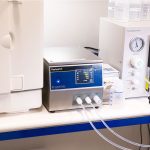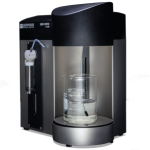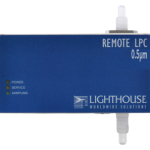Water quality plays a critical role in the pharmaceutical industry, where stringent requirements must be met to ensure the safety and efficacy of pharmaceutical products. Different pharmaceutical processes demand varying levels of water quality, making it essential to have precise control over water purification systems. Contaminated water can jeopardize product quality and, ultimately, patient safety. In this article, we delve into the significance of monitoring liquid particle counters (LPC) in maintaining pharmaceutical water quality and ensuring compliance with industry standards, particularly the EU GMP Annex1.
Pharmaceutical Water Quality: A Complex Spectrum
The pharmaceutical industry relies heavily on water as a utility in various aspects of production and product preparation. The diverse pharmaceutical applications require different grades of water quality. Control over water quality, especially microbiological quality, remains a paramount concern, leading to substantial investments in water purification systems.
Water for Injection (WFI)
Water for Injection (WFI) holds a crucial role in pharmaceutical processes. It serves as an excipient, reconstitutes products, aids in synthesis, participates in the production of finished products, and is used as a cleaning agent for rinsing vessels and equipment. Consequently, WFI must be sterile and free of viable contamination to ensure the quality and safety of the final pharmaceutical product.
Historically, WFI production was limited to distillation. However, recent revisions to the European Pharmacopeia monograph for Water for Injections (0169) now allow the production of WFI through a purification process using reverse osmosis with electro-deionization or nanofiltration. This change underscores the industry’s pursuit of innovative methods to meet the demanding standards for water quality.
Potable (Mains) Water
Potable or mains water serves as the primary source for all other grades of water in pharmaceutical processes. Importantly, it has no direct contact with the pharmaceutical product, making it suitable for initial stages of production.
Purified Water
Purified water undergoes mechanical filtration or processing to remove impurities, making it suitable for various pharmaceutical applications. While distilled water was once the primary form of purified water, modern purification techniques include capacitive deionization, reverse osmosis, carbon filtering, microfiltration, ultrafiltration, ultraviolet oxidation, and electro-deionization. These processes can produce ultrapure water with trace contaminants measured in parts per billion (ppb) or parts per trillion (ppt).
Water for Injections (WFI)
Water for Injections (WFI) is used for the preparation of medicines for parenteral administration, such as injections. It requires extra high quality and must be free from significant contamination. Sterile versions of WFI are utilized for making solutions that will be administered by injection.
Liquid Particle Monitoring in Pharmaceutical Water Quality
With the recent updates in Good Manufacturing Practices (GMP), particularly the EU GMP Annex1: 2022 update, pharmaceutical companies are emphasizing a complete facility Contamination Control Strategy. This strategy is vital in maintaining product quality and patient safety.
Monitoring Purified Water and WFI Systems
Monitoring these critical water systems is now facilitated through the use of liquid particle counters (LPCs). These instruments enable fast notification of contamination by continuously sampling loop systems. If contamination levels rise beyond acceptable limits, operators and managers are immediately alerted.
A typical monitoring setup includes LPCs placed at key points in the Purified Water and WFI distribution loops. The presence of LPCs at these critical junctures ensures that any deviation from baseline water quality is detected promptly. Additional monitoring points may also be installed at pre-filtration stages to provide early indications of system failure. The ultimate goal is to create an early warning system that prevents contaminated water from circulating within the sterile pharmaceutical production environment.
Online Liquid Particle Monitoring
In the digital age, the adoption of online liquid particle counters is gaining prominence. These remote LPCs can be easily connected to water systems and capture crucial data in real-time. Notifications can be issued immediately to end-users, allowing for rapid response to any deviations from the established water quality standards.
Multiple monitoring points can be implemented to assess filtration efficiency and system integrity. Most pharmaceutical water systems utilize a combination of process filtration and reverse osmosis with deionized systems. These filtration systems typically employ pore sizes ranging from 0.2μm to as fine as 0.1μm.
Advantages of a Liquid Particle Monitoring System
Implementing a liquid particle monitoring system in pharmaceutical water quality management offers several advantages:
- Real-Time Contamination Control: LPCs provide real-time data, allowing for immediate action if contamination is detected.
- Establishing Baseline Trends: The system enables the establishment of baseline trends and the setting of alarm notifications to prevent deviations from acceptable water quality standards.
- Data Analytics: Real-time data can be analyzed to develop system service strategies, optimizing water purification processes.
- System Uptime Maximization: Monitoring helps maximize system uptime, reducing downtime and associated costs.
- Improved Product Quality Yield: Enhanced water quality leads to improved product quality yield.
- Informed Decision-Making: Reliable data informs process decisions and ensures adherence to regulatory requirements.
- Prevention of Accidental Contamination: LPCs prevent the accidental use of contaminated water in pharmaceutical processes.
- Ease of Installation and Management: Liquid particle monitoring systems are easy to install and manage, making them accessible to pharmaceutical companies of all sizes.
Conclusion
The pharmaceutical industry’s commitment to water quality is reflected in its rigorous standards and investments in water purification systems. Liquid particle monitoring plays an essential role in safeguarding pharmaceutical water quality by providing real-time data and early warning capabilities. With the implementation of these monitoring systems, pharmaceutical companies can maintain compliance with evolving regulatory requirements while ensuring the safety and efficacy of their products.
Ready to enhance your pharmaceutical water quality control and compliance efforts? Contact us today to explore the latest liquid particle monitoring solutions for your facility. Ensure the safety and efficacy of your pharmaceutical products while staying ahead of regulatory changes. Don’t compromise on water quality – take proactive steps now!



